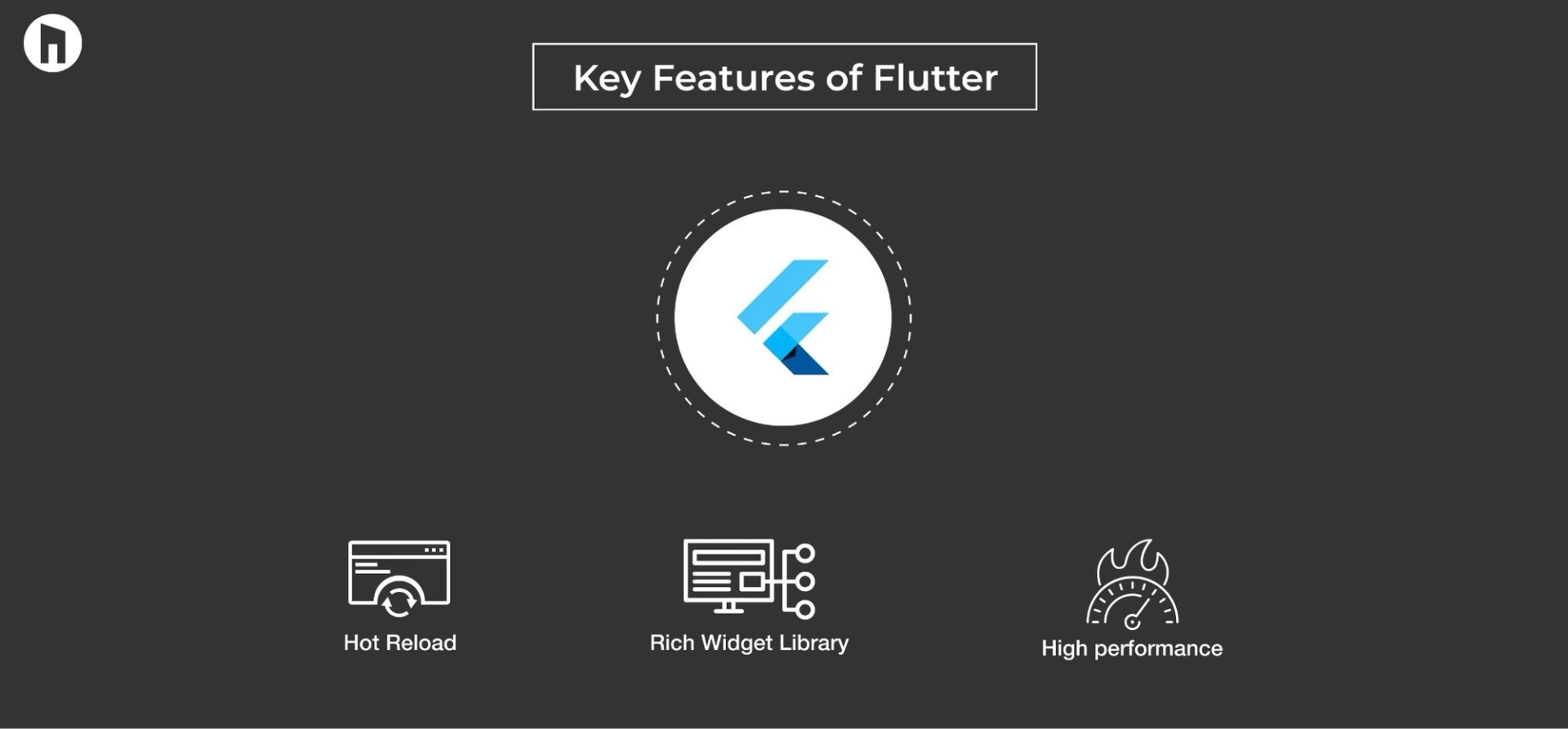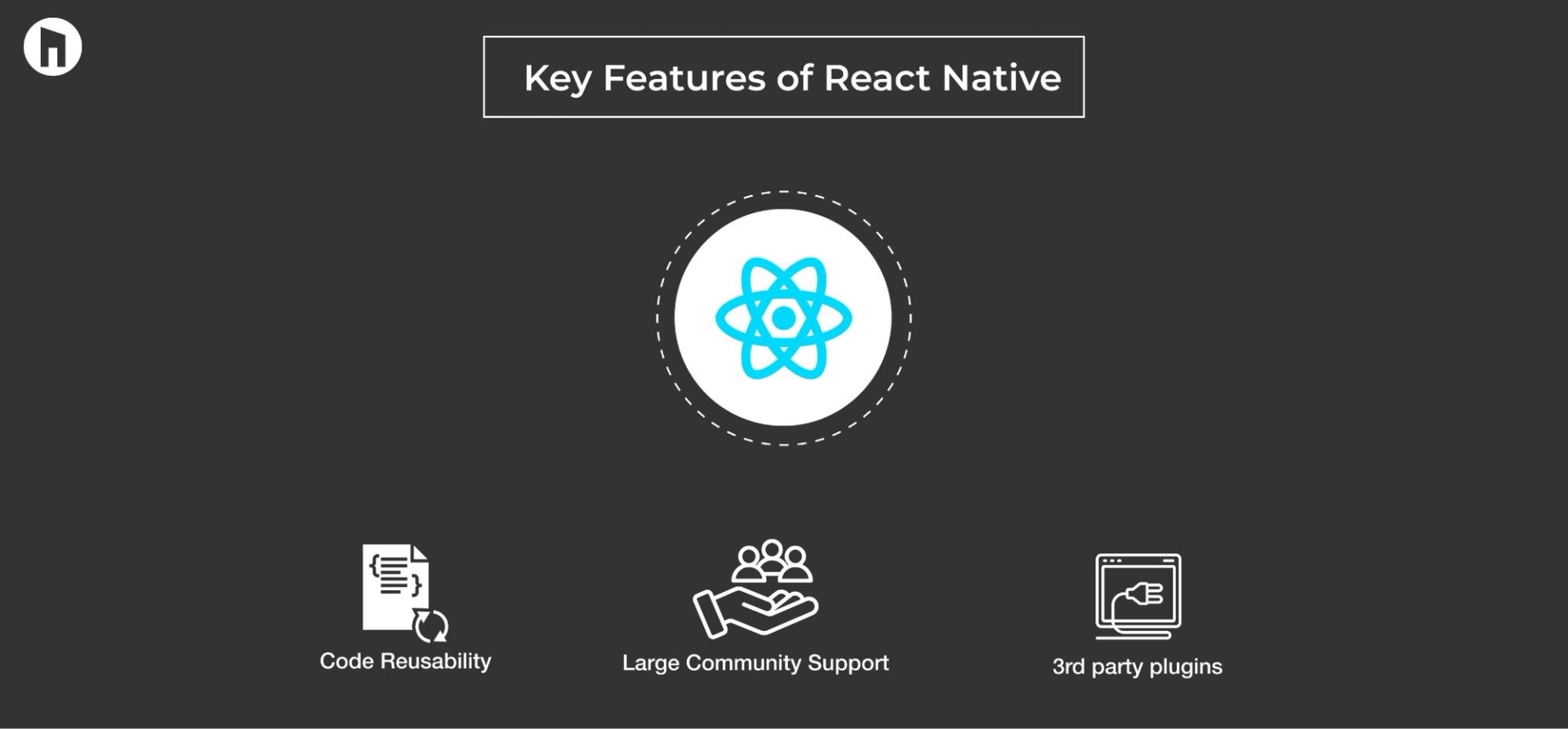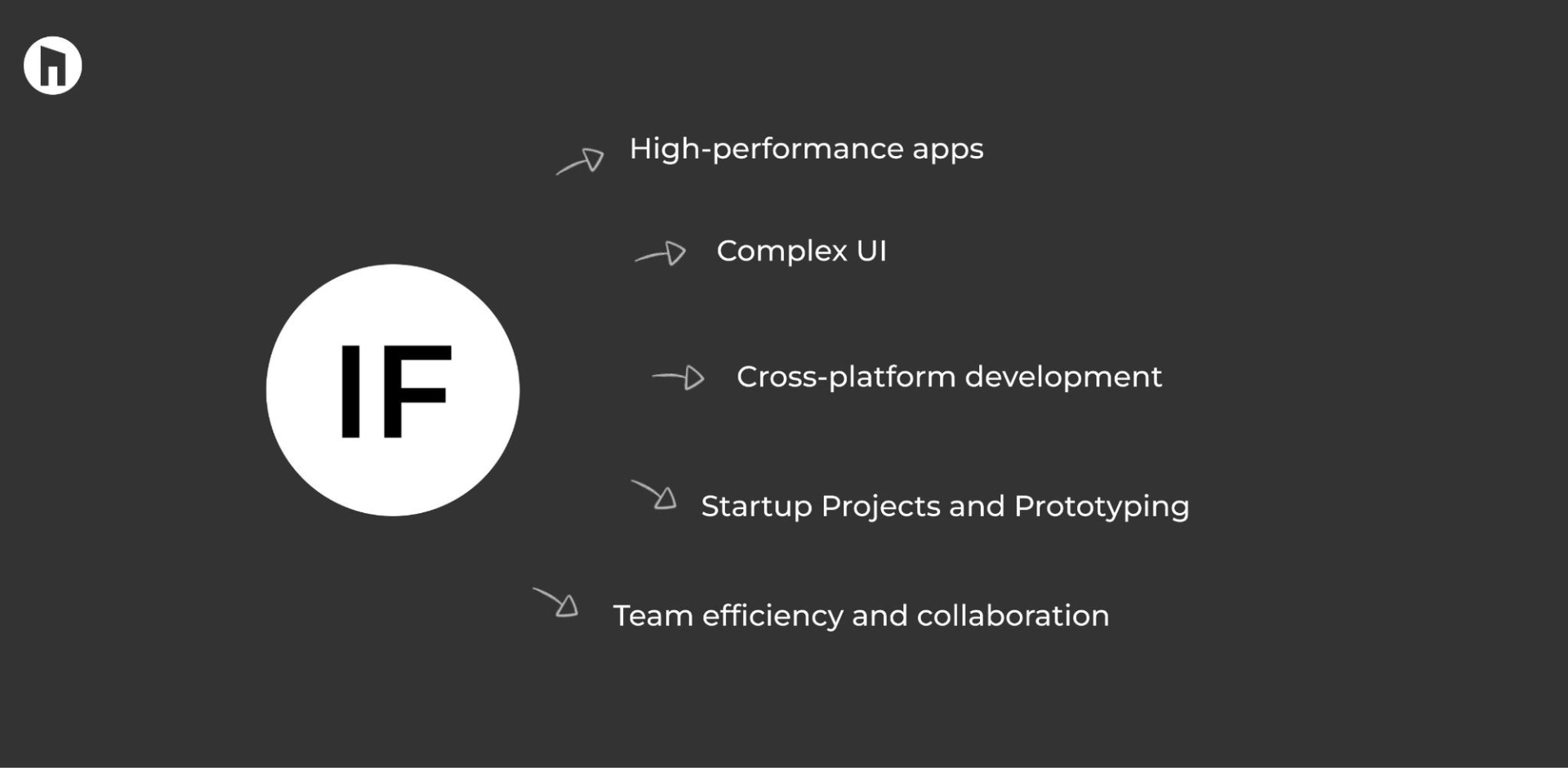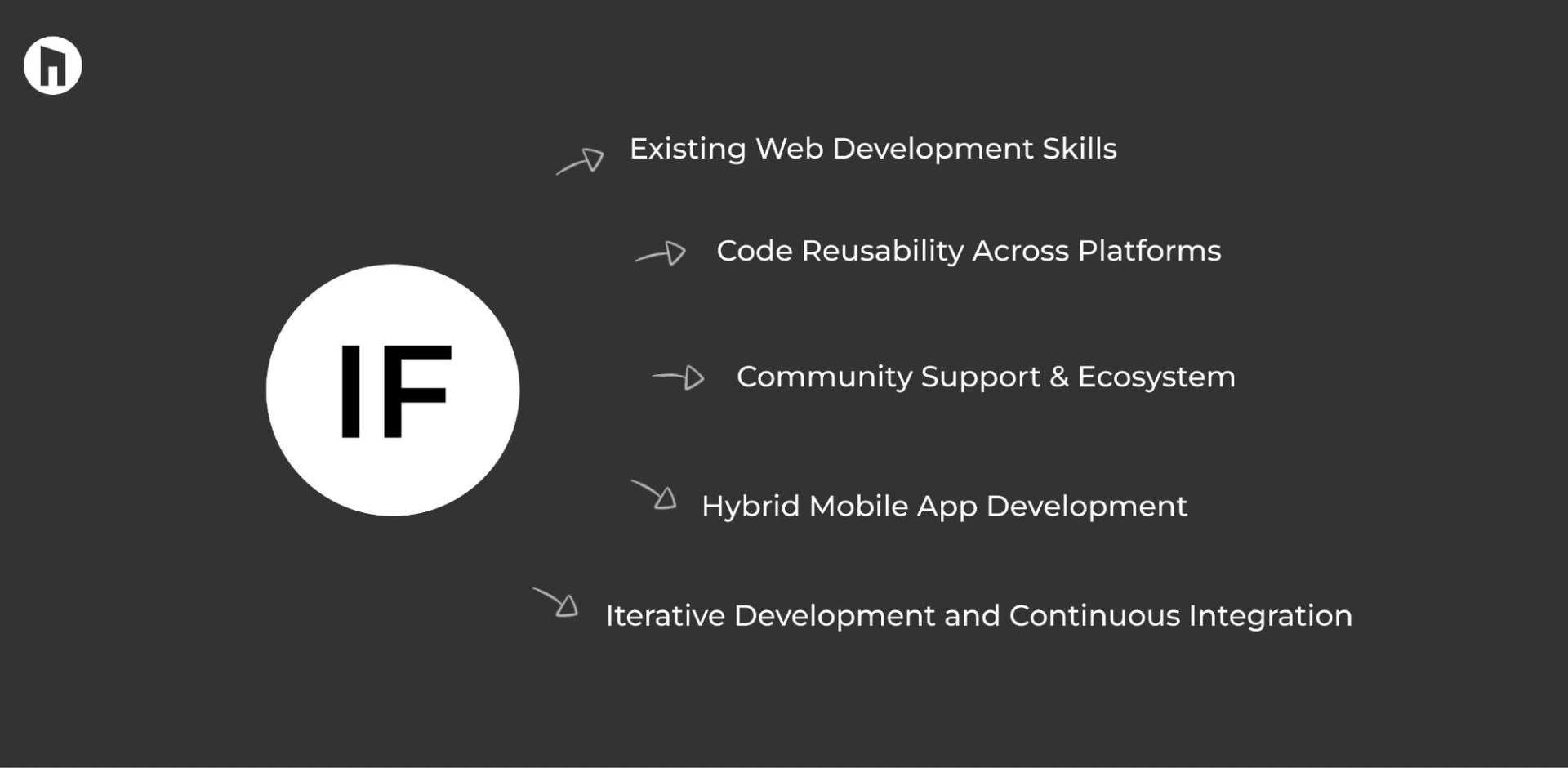Flutter Vs React Native, What To Choose In 2024?
In today’s ever-changing digital world, mobile apps have become an essential part of our lives. As the need for feature-packed and eye-catching apps continues to grow, developers are always looking for new tools and technologies to make the development process easier and provide better user experiences.
Two frameworks that have gained a lot of attention in the last couple of years are Flutter and React Native.
Understanding Flutter
Developed by Google, Flutter is a powerful open-source user interface (UI) software development kit (SDK) that allows you to build natively compiled apps for mobile devices, web browsers, and desktops from a single source code base. Flutter is based on the popular Dart programming language and provides a wide range of features and tools to simplify the app development process.
Key Features of Flutter


- Hot Reload: Flutter’s hot reload feature is one of its best features. It allows you to make changes in the codebase, and you can see the results right away, without having to restart the app. This fast iteration process significantly increases the speed of development and productivity.
- Rich Widget Library: Flutter’s rich widget library offers a wide range of pre-built widgets that meet a wide range of UI design needs. From simple buttons and text field widgets to complex animations and gesture widgets, Flutter’s widget ecosystem allows developers to create highly customisable and beautiful interfaces with ease.
- High performance: Flutter compiles code directly to native machine code for optimal performance across all platforms. The layered architecture and fast rendering engine help in smooth animations, faster rendering, and better overall app performance.
Exploring React Native
React Native is a cross-platform application development framework developed by Facebook. It takes advantage of the strengths of JavaScript and the declarative nature of React. React Native focuses on code reuse and native-level performance, which is why it has become popular among developers around the world.
Key Features of React Native


- Code Reusability: React Native’s code reusability philosophy is based on the idea that a single codebase can be written in JavaScript and deployed across multiple platforms, such as iOS, Android, or even the web, reducing development time and increasing productivity.
- Large Community Support: React Native benefits from a large and active community because it is an open-source, Facebook-backed framework. This community is made up of developers, contributors, and enthusiasts who share knowledge, collaborate, and improve the framework regularly.
- 3rd party plugins: React Native supports a wide variety of third-party plugins and libraries. This allows you to extend the features of your app and integrate native native device features with ease. Whether you want to access device sensors, add in-game purchases, or add social media authentication to your app, React Native has you covered with its extensive plugin ecosystem.
A Comparative Analysis
Performance
- Flutter: Dart is a compiled programming language, and Flutter compiles directly to native machine code. Because of this, Flutter performs exceptionally well, providing smooth animations, smooth transitions, and fast UI rendering across multiple platforms.
- React Native: While React Native also provides excellent performance, it does experience some performance issues from time to time. React Native relies heavily on JavaScript bridges to communicate with native components. However, with the optimizations and performance improvements in recent updates, these issues have been greatly reduced.
Development Experience
- Flutter: Flutter’s development experience is characterized by a smooth workflow, thanks to features such as hot reload and an extensive set of tools. Seeing changes in real time and being able to iterate quickly gives developers the ability to iterate quickly and fine-tune their apps with accuracy.
- React Native: With React Native, developers have access to a familiar and easy-to-use development environment, using the well-known React framework and the declarative approach to programming. The lack of a native hot reload feature might slow down the development speed a bit, but React Native’s robust ecosystem and vast documentation make up for this.
Community and Ecosystem
- Flutter: Flutter is a relatively new development framework for cross-platform applications. However, it has quickly become popular and has a large community of developers and enthusiasts. The community of Flutter is active in sharing knowledge, collaborating on projects, and creating plugins and packages that improve the functionality of the framework.
- React Native: Long-standing in the market and supported by Facebook, React Native has a much larger and more established community. The rich documentation, dozens of tutorials, and huge library and plugin collections make React Native an appealing option for developers looking for strong community support and resources.
When to use Flutter


Flutter can be used in a variety of situations where speed, performance, and an eye-catching UI are important. Here are a few situations where Flutter excels:
- High-performance apps: If you’re building a high-performance application, such as a graphics-intensive game, multimedia app, or a real-time visualization tool, Flutter’s native code direct compilation and fast rendering engine make it an ideal choice.
- Complex UI: With its rich collection of pre-built widgets and customizable UI elements, Flutter is ideal for creating complex and eye-catching user interfaces. From sophisticated e-commerce apps to multimedia streaming platforms and productivity tools with complex animations, Flutter gives you the flexibility and power to make your design vision a reality.
- Cross-platform development: Flutter’s native machine code compilation makes it an ideal choice for cross-platform projects from a single source code base. Whether you’re working on iOS/Android/Web/Desktop, Flutter simplifies the development workflow and guarantees consistent performance and UX across all devices.
- Startup Projects and Prototyping: Flutter’s hot reload feature and rapid development cycle make it an ideal tool for startups and small teams who want to quickly prototype and fine-tune their app ideas. Flutter allows you to experiment with different design concepts, features, and functionality in real time. This allows you to iterate quickly and iterate based on feedback.
- Team efficiency and collaboration: Flutter’s integrated development environment, rich documentation, and easy-to-use UI toolkit encourage collaboration and improve team collaboration. Whether you’re working in a distributed environment or collaborating with developers and designers across multiple disciplines, the unified development ecosystem of Flutter facilitates smooth communication and productivity.
When to use React Native


React Native supports a wide variety of uses and project needs, providing scalability, community support, and more. Here are a few examples of where React Native shines:
- Existing Web Development Skills: If your team is already well-versed in web development technologies like JavaScript, React, or HTML/CSS, then React Native is a familiar and easy-to-use framework to transition to mobile app development. Building on your existing skills and knowledge helps speed up the learning process and speed up the adoption of React Native across your organization.
- Code Reusability Across Platforms: React Native’s core philosophy of code reuse makes it an excellent choice for projects that focus on resource efficiency and cross-platform interoperability. Writing a single JavaScript codebase and deploying it on multiple platforms reduces development time, reduces maintenance burden, and ensures consistent user experience across iOS/Android/Web environments.
- Community Support & Ecosystem: React Native has a large and active community made up of developers, contributors, and enthusiasts. React Native has strong community support and a growing community of third-party libraries, plugins, and tools. If you're looking for solutions to integrate native device features, implement complex functionalities, or troubleshoot issues, the React Native community ecosystem has you covered with comprehensive resources and support.
- Hybrid Mobile App Development: For projects that require a hybrid approach to mobile app development, combining web technologies with native capabilities, React Native offers a compelling solution. By leveraging web views and native modules, React Native enables developers to create hybrid apps that harness the strengths of both web and native environments, delivering a seamless user experience with access to device features and native APIs.
- Iterative Development and Continuous Integration: React Native’s modular architecture and tool support (React Native CLI and Expo) allow for iterative development and Continuous Integration practices. Whether you’re using automated testing, Continuous Deployment, or a version control approach, React Native’s flexible development workflows and tooling support allow for effective project management and collaboration across the entire development lifecycle.
Conclusion
To sum up, Flutter is a great cross-platform app development solution, and React Native is a great mobile app development solution. Both have their strengths and weaknesses, but Flutter has the edge in terms of performance, hot reload, and growing community ecosystem. React Native, on the other hand, has the advantage of code reuse, a huge plugin ecosystem, and lots of community support. In the end, the best mobile app development framework for your project depends on your project needs, your team’s expertise, and whether you’re looking for something that can scale over time or something that can only scale over time. By taking the time to analyze the features, the performance, and the community support of both, you’ll be able to make a decision that matches your project goals and objectives.
